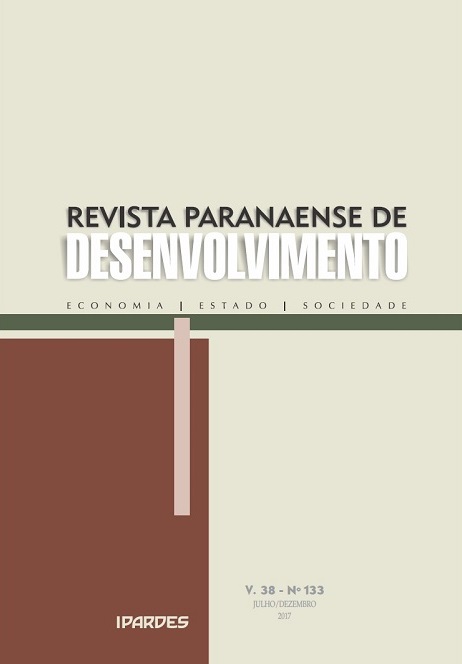Socioeconomic Situation and Vulnerabilities of poor Family Farmers of the State of Paraná
Keywords:
Poor family farmers. Capabilities and livelihoods. PRONAF B. Paraná. Rural and regional development.Abstract
The objective of this study is to analyze the socio-economic and productive conditions of poor family farmers of the state of Paraná, with a view to profiling this social group for a better understanding of their social vulnerabilities. In order to achieve this objective, data from the 2006 IBGE’s Agricultural Census are used, more specifically in the categorization family farmers (Agricultores Familiares - AF) and non-family farmers (Agricultores Não Familiares - ANF) according to the family agriculture Act of 2006, and the separation of the remainder families from those of PRONAF Group B based on the 2006/07 Harvest Plan. The approach to understanding the socio-economic situation of these farmers is that of Amartya Sen’s Theory of Capacities, as operationalized by Frank Ellis’ five types of poor farmers capital/ assets (natural, human, financial, physical and social). Data shows that more than 1/3 of the family farmers of Paraná are poor (36,25%), and that the main social vulnerabilities to hinder their development relate to their restricted farming areas, their low levels of technology and formal education, their advanced age, their poor social organization, their lack of technical assistance and their low agricultural incomes. Our results point to the need for quantitative and qualitative improvements in their assets platform and basic capacities so that they can reduce or even overcome their social vulnerabilities.
The objective of this study is to analyze the socio-economic and productive conditions of poor family farmers of the state of Paraná, with a view to profiling this social group for a better understanding of their social vulnerabilities. In order to achieve this objective, data from the 2006 IBGE’s Agricultural Census are used, more specifically in the categorization family farmers (Agricultores Familiares - AF) and non-family farmers (Agricultores Não Familiares - ANF) according to the family agriculture Act of 2006, and the separation of the remainder families from those of PRONAF Group B based on the 2006/07 Harvest Plan. The approach to understanding the socio-economic situation of these farmers is that of Amartya Sen’s Theory of Capacities, as operationalized by Frank Ellis’ five types of poor farmers capital/ assets (natural, human, financial, physical and social). Data shows that more than 1/3 of the family farmers of Paraná are poor (36,25%), and that the main social vulnerabilities to hinder their development relate to their restricted farming areas, their low levels of technology and formal education, their advanced age, their poor social organization, their lack of technical assistance and their low agricultural incomes. Our results point to the need for quantitative and qualitative improvements in their assets platform and basic capacities so that they can reduce or even overcome their social vulnerabilities.Downloads
Downloads
Published
How to Cite
Issue
Section
License
O(s) autor(es) transfere todos os direitos autorais do artigo para a Revista Paranaense de Desenvolvimento, sendo vedada qualquer reprodução, total ou parcial, em qualquer meio de divulgação, impresso ou eletrônico, sem que a prévia e necessária autorização seja solicitada e, se obtida, fará constar o competente registro e agradecimento à Revista.
Autores que publicam nesta revista concordam com os seguintes termos:
- Autores mantém os direitos autorais e concedem à revista o direito de primeira publicação, com o trabalho simultaneamente licenciado sob a Licença Creative Commons Attribution que permite o compartilhamento do trabalho com reconhecimento da autoria e publicação inicial nesta revista.
- Autores têm autorização para assumir contratos adicionais separadamente, para distribuição não-exclusiva da versão do trabalho publicada nesta revista (ex.: publicar em repositório institucional ou como capítulo de livro), com reconhecimento de autoria e publicação inicial nesta revista.
- Autores têm permissão e são estimulados a publicar e distribuir seu trabalho online após a sua publicação (ex.: em repositórios institucionais ou na sua página pessoal) já que isso pode aumentar o impacto e a citação do trabalho publicado (Veja O Efeito do Acesso Livre).
 Este trabalho está licenciado sob uma Licença Creative Commons Attribution 3.0 .
Este trabalho está licenciado sob uma Licença Creative Commons Attribution 3.0 .



